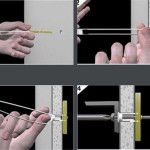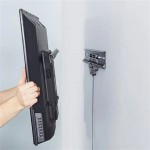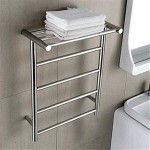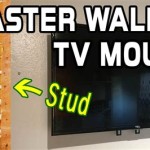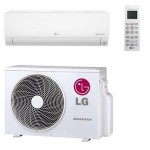Understanding Flex Stack Pack Wall Mounts
Flex Stack Pack wall mounts are specialized mounting solutions designed to securely and efficiently install and manage modular network devices, specifically Cisco’s FlexStack and FlexStack Plus switches. These mounts cater to environments where space is a premium, such as small to medium-sized businesses, branch offices, retail locations, and educational institutions. The fundamental purpose of a Flex Stack Pack wall mount is to enable the physical stacking of compatible network switches on a wall, improving organization, cable management, and accessibility while optimizing valuable floor or rack space.
The technology behind FlexStack and FlexStack Plus allows multiple switches to operate as a single logical unit, significantly increasing network capacity and management efficiency. This stacking capability requires a physical connection between the switches, typically achieved with a dedicated stacking cable. The Flex Stack Pack wall mount facilitates this physical connection by providing a stable and secure platform for the switches to be mounted close together on a wall.
The design of these mounts often incorporates features such as integrated cable management channels, allowing for neat and organized routing of power, network, and stacking cables. This not only improves the aesthetic appearance of the installation but also prevents cable strain and potential disconnections, ultimately contributing to network stability.
Key Benefits of Using Flex Stack Pack Wall Mounts
Flex Stack Pack wall mounts offer several distinct advantages over traditional rack-based or desktop deployments. These advantages directly address the challenges of space constraints, cable management, and accessibility in network environments where efficiency and organization are critical.
Space Optimization: The most significant benefit of using Flex Stack Pack wall mounts is the efficient use of space. By mounting switches on a wall, valuable floor or rack space is freed up for other essential equipment or purposes. This is particularly beneficial in environments with limited square footage, such as small offices or retail locations. The vertical stacking orientation further contributes to space savings by minimizing the footprint of the network infrastructure.
Improved Cable Management: Cable management is a crucial aspect of any network installation. Unorganized cables can lead to troubleshooting difficulties, increased downtime, and even physical hazards. Flex Stack Pack wall mounts typically include integrated cable management features, such as channels or tie-down points, that allow for neat and structured cable routing. This reduces cable clutter, improves airflow around the switches, and simplifies future maintenance or modifications to the network.
Enhanced Accessibility: Wall-mounted switches are generally more accessible than those housed in locked racks or placed on the floor. This accessibility simplifies routine maintenance tasks, such as cable replacements or switch reboots. In the event of a network issue, technicians can quickly access the switches to diagnose and resolve the problem. The elevated positioning also reduces the risk of accidental damage or tampering.
Simplified Installation and Maintenance: While the complexity of the initial setup might vary depending on the specific wall mount and switch models, most Flex Stack Pack wall mounts are designed for relatively straightforward installation. Clear instructions and included hardware typically facilitate the mounting process. Once installed, the improved organization and accessibility provided by the wall mount simplify ongoing maintenance and troubleshooting tasks, saving time and resources.
Factors to Consider When Choosing a Flex Stack Pack Wall Mount
Selecting the appropriate Flex Stack Pack wall mount requires careful consideration of several factors to ensure compatibility, functionality, and long-term reliability. Failing to adequately assess these factors can lead to installation difficulties, performance issues, or even equipment damage.
Switch Compatibility: The first and foremost consideration is ensuring that the wall mount is compatible with the specific models of Cisco FlexStack or FlexStack Plus switches being used. Each switch model may have slightly different dimensions, port configurations, or mounting requirements. Using an incompatible wall mount can prevent proper installation or compromise the integrity of the stack.
Weight Capacity: The wall mount must be able to safely support the combined weight of all the switches being stacked. Overloading the wall mount can lead to structural failure, potentially damaging the switches or causing a safety hazard. It is essential to consult the specifications of both the wall mount and the switches to determine the maximum weight capacity and ensure that it is not exceeded.
Mounting Surface: The type of wall on which the switches will be mounted is another critical factor. Different wall types, such as drywall, concrete, or wood, require different types of mounting hardware and may have varying weight-bearing capacities. It is crucial to use appropriate anchors and fasteners to securely attach the wall mount to the wall and prevent it from pulling away under the weight of the switches.
Ventilation and Cooling: Adequate ventilation is essential to prevent overheating of the switches. The wall mount should be designed to allow for proper airflow around the switches, preventing heat buildup that can lead to performance degradation or equipment failure. Consider the ambient temperature of the environment and the cooling capabilities of the switches when selecting a wall mount.
Cable Management Features: Evaluate the cable management features of the wall mount. Look for features such as cable channels, tie-down points, or strain relief mechanisms that can help organize and protect the cables. Effective cable management not only improves the appearance of the installation but also reduces the risk of cable damage and disconnections.
Material and Durability: The wall mount should be constructed from durable materials that can withstand the rigors of a network environment. Look for wall mounts made from high-quality steel or aluminum with a powder-coated finish for corrosion resistance. The construction should be robust enough to prevent bending or flexing under the weight of the switches.
Installation Best Practices for Flex Stack Pack Wall Mounts
Proper installation is crucial for the safe and effective operation of Flex Stack Pack wall mounts. Following established best practices can help ensure a secure and reliable installation that minimizes the risk of equipment damage or network disruptions.
Thorough Planning: Before beginning the installation process, carefully plan the layout and configuration of the switches. Determine the optimal placement for the wall mount, taking into account factors such as proximity to power outlets, network connections, and other equipment. Consider the accessibility of the switches for future maintenance and troubleshooting.
Proper Wall Preparation: Ensure that the wall is structurally sound and capable of supporting the weight of the switches and the wall mount. Use a stud finder to locate wall studs and consider using appropriate anchors for drywall or concrete walls. Pre-drill pilot holes for the mounting screws to prevent splitting or cracking the wall.
Secure Mounting: Use the correct type and size of mounting hardware for the wall type and the weight of the switches. Tighten the mounting screws securely, but avoid over-tightening them, which can damage the wall or the wall mount. Double-check the stability of the wall mount before installing the switches.
Cable Management Implementation: Route the cables neatly and securely through the cable management channels of the wall mount. Use cable ties or Velcro straps to bundle and organize the cables. Avoid placing excessive strain on the cables, and ensure that they are properly labeled for easy identification.
Ventilation Considerations: Ensure that there is adequate airflow around the switches to prevent overheating. Avoid blocking the vents on the switches, and consider installing fans if necessary. Monitor the temperature of the switches regularly to ensure that they are operating within their specified temperature range.
Testing and Verification: After installing the switches, thoroughly test the network connectivity and functionality to ensure that everything is working properly. Verify that the switches are communicating with each other and with the rest of the network. Monitor the performance of the switches over time to identify and address any potential issues.
In summary, Flex Stack Pack wall mounts provide a valuable solution for optimizing space, improving cable management, and enhancing accessibility in network environments. By carefully considering factors such as switch compatibility, weight capacity, and mounting surface, and by following established installation best practices, users can ensure a secure and reliable installation that maximizes the benefits of this technology.

Flex Stack Pack Steel Wallmount Fs1503 2 At Com

Flex Fs1503 2 Stack Pack Wall Mount Rail

Flex Fs1503 2 Stack Pack Wall Mount Rail

Flex Fs1503 2 Stack Pack Wall Mount Rail

Flex Stack Pack Wall Mount Rail 2 Fs1503

Flex Fs1503 2 Stack Pack Wall Mount Rail

Flex Stack Pack 2 Plastic Charger Mount Fs1606 At Com

Flex Stack Pack Box Mount Kit 10 Piece Fsm1501

Flex Stack Pack Steel Box Mount Kit Fsm1501 10 At Com

Flex Stack Pack Wave 2 Every New Tool Box Add On

